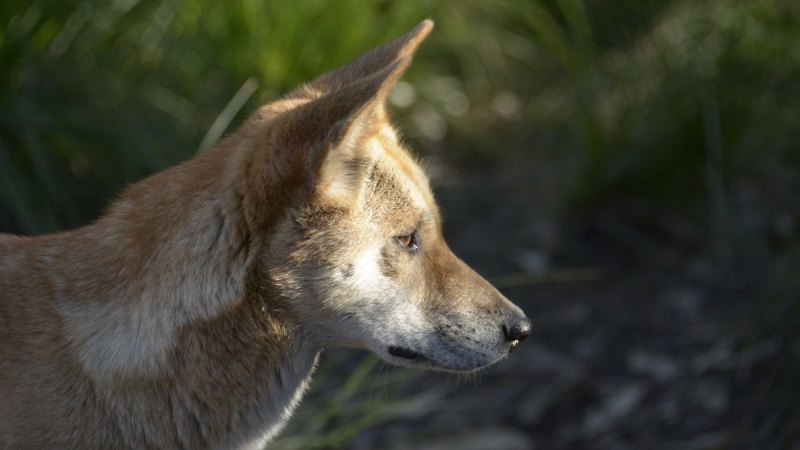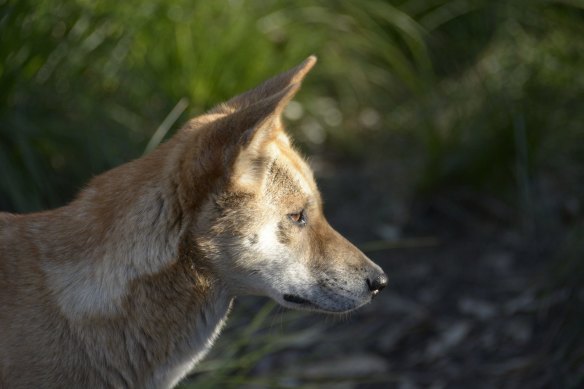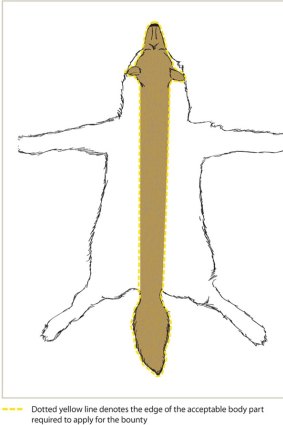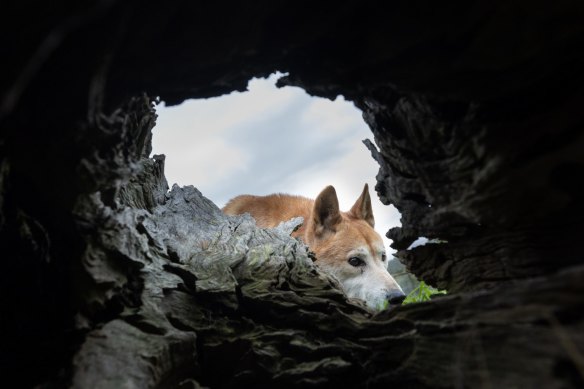Save articles for later
Add articles to your saved list and come back to them any time.
A Victorian bounty scheme that pays farmers more than $100 for “wild dog” pelts has come under fire after new research revealed most dingoes in the state are purebred.
In new research published this week in Molecular Ecology, scientists from the University of NSW and Sydney University undertook comprehensive DNA testing on 307 wild animals from across Australia and found, contrary to popular belief, about 90 percent of them were pure dingoes, not hybrids.
New research has upended the myth that pure dingoes no longer live in large regions of Victoria.
“We went from thinking they were feral dogs to realising they were pure dingoes,” said study author Dr Kylie Cairns. “It’s really quite exciting that in the Victorian dingoes we found so many of the animals were pure.”
Previous DNA studies suggested pure dingoes were virtually extinct in Victoria and NSW. Dingoes are an endangered species but are unprotected on all private land in Victoria, where they can threaten livestock.
Of the 62 Victorian animals examined, nearly 90 per cent were “pure” dingoes – with 99.99 per cent dingo DNA – the research found. In NSW, over 60 per cent of the animals tested were pure, and only two animals had less than 70 per cent dingo DNA.
Victoria’s $6.7 million fox and wild dog bounty program, which began in 2011 and runs from February to October each year, pays landholders $120 for each “wild dog” body part. Government figures show about 1730 body parts have been redeemed in the past five years. However, fox scalps, which attract a $10 reward, are collected in far greater numbers.
Eligible applicants must submit an entire wild dog body part, which consists of a single piece of skin and fur running from the snout, incorporating the ears, along the animal’s back and including the tail.
Deakin University ecologist Professor Euan Ritchie said the new research suggests that most of the animals called wild dogs are actually dingoes.
Diagram of an “acceptable body part” of a wild dog for the Victorian fox and wild dog bounty. Credit: Agriculture Victoria
“I’d like to see some evidence-based policy,” said Ritchie. “Dingoes have an important ecological role as an apex predator, and they have important cultural value – many First Nations groups wants to have dingoes back on Country.”
Ritchie would like to see the money invested in alternative pest control methods, like training graziers to use guard animals such as alpaca or maremma dogs, or installing quality fencing.
“We need to shift the conversation from the blunt instrument of bounties to more effective investment and tools for graziers.”
Cairns agrees: “You’re listing them as a threatened species, but not protecting them across large areas and encouraging people to kill them.”
Dingoes have been in Australia for between 5000 and 11,000 years. Previously, scientists used skull measurement tests and DNA testing developed in the 1990s to come to the conclusion that few “pure” dingoes remained in eastern Australia. Victoria listed them as a threatened species, after finding only 1 per cent of animals killed in pest control programs were dingoes.
“You’re listing them as a threatened species but not protecting them across large areas and encouraging people to kill them.”
However, improved DNA testing methods allowed Cairns and other researchers to identify 195,000 DNA markers (compared with just 23 markers in earlier studies), and they realised the original methods often misidentified pure dingoes as hybrids.
A spokesperson for the Victorian government said the department of energy, environment and climate action would consider the implications of the research for dingo conservation policy in Victoria.
One of the dingoes at the Dingo Discovery Sanctuary and Research Centre.Credit: Jason South
“We are aware of new research about the genetic status of free-ranging dogs in Australia – including wild dogs, dog-dingo hybrids and dingoes,” they said.
Get to the heart of what’s happening with climate change and the environment. Our fortnightly Environment newsletter brings you the news, the issues and the solutions. Sign up here.
Most Viewed in Environment
From our partners
Source: Read Full Article






